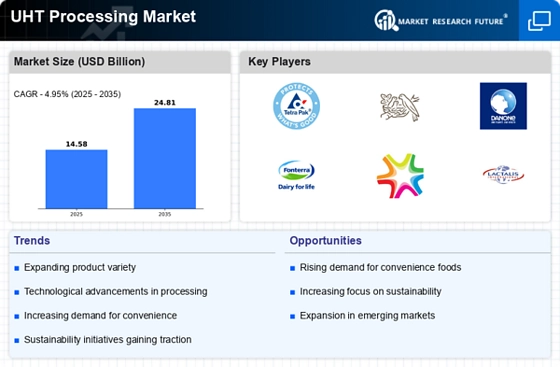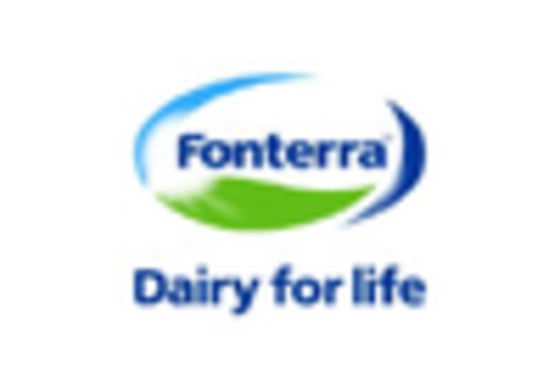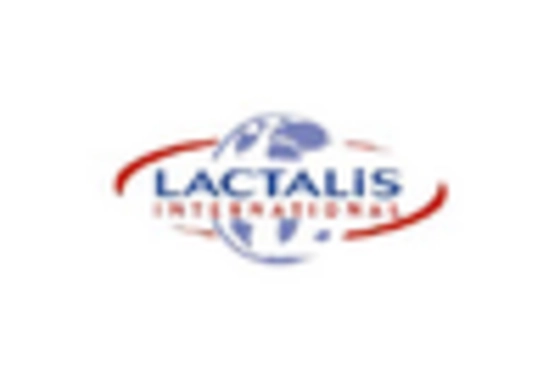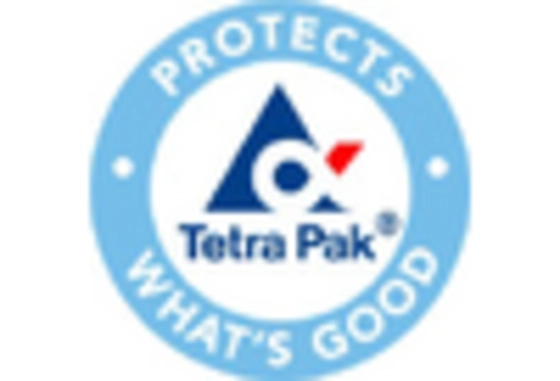Increasing Shelf Life of Products
The UHT Processing Market is experiencing a notable surge in demand due to the increasing need for extended shelf life of food products. UHT processing, which involves heating food to high temperatures for a short duration, effectively eliminates spoilage microorganisms. This technology allows products to remain stable without refrigeration for extended periods, which is particularly advantageous for dairy and juice products. As consumers increasingly seek convenience and longer-lasting products, the UHT Processing Market is poised for growth. Recent data indicates that the UHT processed dairy segment alone is projected to reach a market value of approximately 25 billion USD by 2026, reflecting a compound annual growth rate of around 8%.
Expansion of Retail and E-commerce Channels
The UHT Processing Market is benefiting from the expansion of retail and e-commerce channels. As online shopping becomes more prevalent, the accessibility of UHT processed products is increasing. Retailers are increasingly stocking UHT products due to their long shelf life, which reduces the risk of spoilage and waste. This trend is particularly relevant in regions where traditional refrigeration is less accessible. E-commerce platforms are also promoting UHT products, allowing consumers to purchase them conveniently from home. Market data suggests that the online sales of UHT processed goods are expected to grow by 20% annually, reflecting a shift in consumer purchasing behavior and further driving the UHT Processing Market.
Growing Demand for Plant-Based UHT Products
The UHT Processing Market is witnessing a growing demand for plant-based UHT products. As more consumers adopt vegetarian and vegan diets, the need for UHT processed plant-based alternatives is increasing. Products such as almond milk, soy milk, and oat milk are gaining popularity due to their perceived health benefits and sustainability. UHT processing allows these products to maintain their quality and extend shelf life without the need for preservatives. Market trends indicate that the plant-based UHT segment is projected to grow at a rate of 12% annually, reflecting a significant shift in consumer preferences and dietary choices. This trend is likely to continue shaping the UHT Processing Market in the coming years.
Rising Health Consciousness Among Consumers
The UHT Processing Market is significantly influenced by the rising health consciousness among consumers. As individuals become more aware of nutritional content and food safety, there is a growing preference for products that retain their nutritional value while being safe for consumption. UHT processing preserves essential vitamins and minerals, making it an attractive option for health-oriented consumers. This trend is particularly evident in the dairy sector, where UHT milk is perceived as a healthier alternative due to its extended shelf life and reduced need for preservatives. Market analysis suggests that the demand for UHT processed products is likely to increase, with projections indicating a potential market expansion of 15% in the next five years.
Technological Advancements in UHT Processing
Technological advancements play a crucial role in shaping the UHT Processing Market. Innovations in UHT technology, such as improved heat exchangers and better automation systems, enhance efficiency and product quality. These advancements not only reduce production costs but also improve energy efficiency, making UHT processing more sustainable. As manufacturers adopt these technologies, they can produce higher volumes of UHT products, catering to the increasing consumer demand. The market is witnessing a shift towards more sophisticated UHT systems, which are expected to drive growth. Industry reports indicate that investments in UHT technology could lead to a market growth rate of approximately 10% over the next few years.

















Leave a Comment